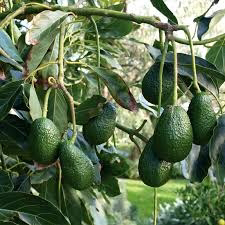Challenge and Opportunity of Grape growing in Uganda
Uganda, known for its diverse agricultural potential, boasts a wide array of crops, from staple foods like cassava and bananas to cash crops like coffee and cocoa. However, one crop notably absent from Ugandaa's agricultural landscape is grapes. Despite the country's climatic diversity and agricultural heritage, grape growing in Uganda remains limited.
Climate and geography
One of the primary reasons for the limited number of grape growers in Uganda is the challenging climate and geography. Grapes are traditionally grown in regions with a Mediterranean climate characterized by mild, wet winters and warm, dry summers. Uganda's climate, by contrast, varies from tropical in the south to semi arid in the north. Most grape varieties require a more temperate climate with distinct seasonal variations, making it difficult to find suitable regions for grape cultivation.
Lack of suitable grape varieties
Grapes come in a wide variety of species and cultivars, each adapted to specific environmental conditions. Uganda's growers face challenges in sourcing grape varieties that are well-suited to the country's climate and soil. Many traditional grape varieties are not well-suited to Uganda's tropical conditions, which can lead to low yields and poor fruit quality.
Pest and disease pressure
Grapevines are susceptible to various pests and diseases, which can be particularly problematic in a tropical environment like Uganda. Common grapevine pests such as grape berry moths and grapevine leafhoppers thrive in warm, humid conditions. Managing these pests and diseases can be a significant challenge for growers, requiring the use of pesticides and other control measures.
Lack of knowledge and training
Grape cultivation is a specialized field that requires specific knowledge and skills. Many Ugandan farmers may lack the necessary expertise in grape farming practices, from vineyard establishment to pruning and harvesting. This lack of knowledge can deter potential grape growers from entering the industry.
Infrastructure and market challenges
The limited infrastructure for grape processing and distribution is another obstacle for potential grape growers in Uganda. Grapes are a perishable fruit that requires careful handling and transport to reach consumers in good condition. The absence of adequate cold storage and transportation facilities can hinder the expansion of grape cultivation.
Opportunities for grape growing in Uganda
While there are challenges to grape cultivation in Uganda, there are also opportunities for the industry to develop and thrive.
Research and Development: Investing in research to develop grape varieties that are better suited to Uganda's climate and soil conditions can pave the way for increased grape production.
Training and Education: Providing training and education to farmers on grape cultivation techniques, pest and disease management, and post-harvest handling can help build the necessary expertise within the agricultural community.
Infrastructure Development: Building cold storage and processing facilities can improve the post-harvest handling of grapes, reducing spoilage and increasing the marketability of the fruit.
Market Expansion: Exploring local and international markets for Ugandan-grown grapes can create opportunities for growers to increase their revenue and profitability.
Climate Adaptation: Experimenting with climate adaptation strategies, such as shade netting and microclimate control, can help mitigate some of the challenges posed by Uganda's climate.
While grape growing in Uganda'a faces several challenges, there is potential for the industry to grow and thrive with the right investments in research, education, infrastructure, and market development. By addressing these challenges and seizing opportunities, Uganda could develop a successful grape industry that adds diversity to its agricultural landscape and contributes to economic growth.




Comments
Post a Comment